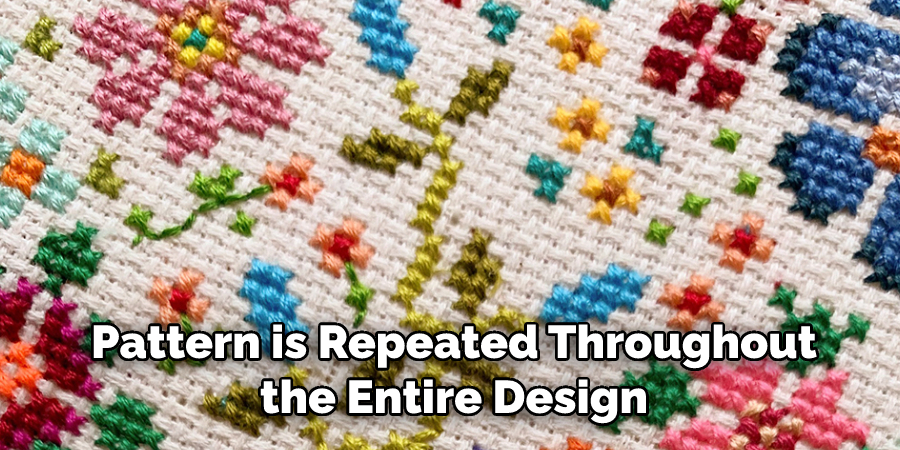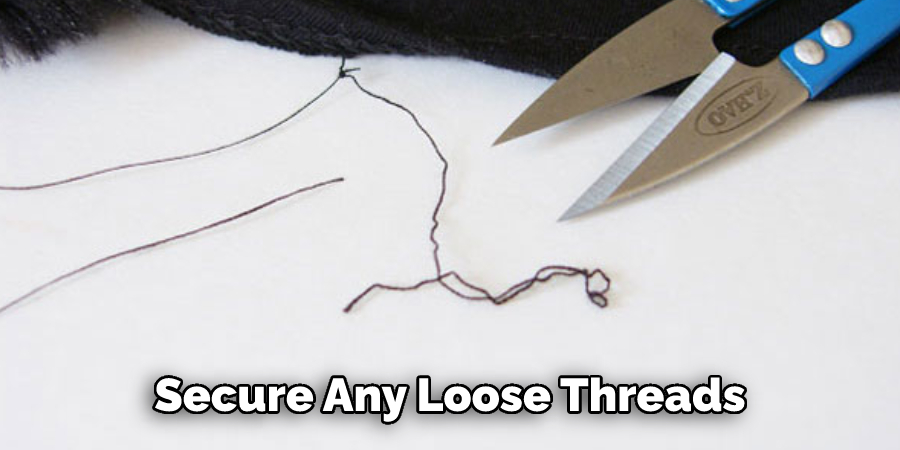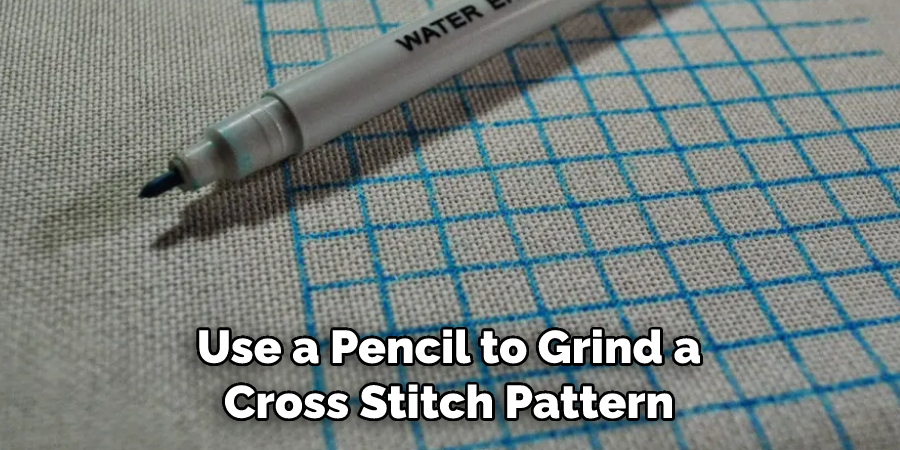Are you ready to learn how to grid cross stitch? This age-old needlework form is a simple and satisfying way of creating beautiful designs. Follow this step-by-step guide to get started!
Cross stitching has been popular for centuries and is a wonderful way to express yourself through art. If you have ever wanted to learn the basics of cross stitch, be it creating your own patterns or just grid-crossing a design onto fabric, this blog post will provide insight on how to get started!

Crafting with grids allows you to achieve beautiful results without needing precision, as each individual square within the pattern matters equally. From equating colors and shapes so that they blend together in harmony to simply counting Xs and Os among colorful threads – we’ll show you all you need to know about how to grid-stitching!
What Will You Need?
When it comes to grid cross stitches, you will need a few basic pieces of equipment. You will need the followings:
- Cross stitch pattern
- Graph paper
- Colored floss
- Needle
- Embroidery hoop or frame
- Scissors
- Fabric for stitching
For the graph paper, using one with a light color and small squares (2.5-10 squares per inch) is important. This will help you to see how your stitches are laying and how they should be placed in the pattern. Make sure to have enough colored floss on hand – you may need to purchase extra if your pattern is detailed or has lots of colors.

Once you have all the necessary items and supplies, you can start grid cross stitch!
10 Easy Steps on How to Grid Cross Stitch
Step 1. Print Out Your Pattern
Print out the pattern you want to use. If your pattern is complex, try finding a larger version online or enlarging it on a copy machine. Be careful when enlarging patterns, as you don’t want to distort the image or lose details.
Step 2. Trace Pattern onto Graph Paper
Trace the design from your printed pattern onto graph paper using a light-colored pencil. This will help you plan how you should lay and stitch out each X on the fabric – it will also make counting easier! Make sure to trace all of the lines so that they are visible and easy to follow.
Step 3. Transfer Traced Design to Fabric
Carefully transfer your traced design onto the Aida cloth (or other fabric) by lightly tracing over each square in the grid with a pencil or water-soluble marker. If using a marker, make sure to test it on a scrap piece of fabric first. Don’t worry about how precise the tracing is – it just needs to be close enough for you to see how you will stitch out each X.
Step 4. Prepare Fabric for Stitching
Secure the fabric to an embroidery hoop or frame, then thread a needle with your desired color of floss. Start stitching on the wrong side of the fabric so that any mistakes won’t be seen from the front! Additionally, it will be easier to follow the pattern from the back of the fabric.
Step 5. Counting Xs and Os
Begin counting how many Xs and Os you need in each row and column of the design. For example, if you have three rows with four Xs and two Os, count how many times this pattern is repeated throughout the entire design. It helps to make sure that everything matches up correctly!

Step 6. Begin Stitching
Start stitching each X and O in the pattern, starting with the center of your design. This will help you ensure everything is laid out correctly before you add additional stitches! You can use a backstitch for outlining or do the traditional cross stitch.
Step 7. Matching Up Colors
Once you have finished stitching all the Xs and Os on one side of the fabric, flip it over to check how the colors match up. Make sure to adjust any mismatched threads as necessary to ensure that your product looks perfect! Don’t forget to keep counting how many Xs and Os you have – this will help make sure everything is evenly balanced throughout the design.
Step 8. Finishing Touches
Add any finishing touches, such as French knots or back-stitching for finer details. If desired, add a border around the entire design to complete its look. This will also help keep loose threads from fraying too much.
Step 9. Secure Loose Threads
Secure any loose threads with a few tiny knots on the wrong side of the fabric, then snip off any excess fabric. If necessary, touch up any areas with additional stitches or new floss colors to perfect your design! Ensure that everything looks how you want it before moving on to the next step.

Step 10. Enjoy Your Cross Stitch Creation!
Voila! You have now completed the grid cross stitch and can enjoy your beautiful creation for years to come! Whether you want to frame it as wall art or use it as a pillow cover – you’ll never forget how much fun you had making it.
By following these easy steps, grid cross stitches will be a breeze! You’ll soon be able to create beautiful and intricate designs that you can proudly display in your home or give as gifts. So grab your supplies and get stitching today!
5 Additional Tips and Tricks
1. Trace the pattern onto a piece of wax paper with a pencil or marker. This will make transferring the design onto your fabric easier, as you can simply place the wax paper onto the fabric and trace it.
2. Choose a fabric with a tight weave, like Aida cloth or linen. This will help ensure that your stitches stay in place as you work.
3. To help you keep track of how many stitches have been completed, use pins to mark each square on your grid.
4. Use thread conditioner before starting work, as this will make sure that your threads stay strong while stitching.
5. After completing each row, check it against the pattern to make sure everything is lined up correctly and no mistakes are made! This way, any crochet mistakes can be easily fixed before proceeding to the next row.
By following these tips and tricks for grid cross stitch, you’ll be able to create beautiful works of art in no time! With practice and patience, you’ll be a pro in no time.
5 Things You Should Avoid
1. Don’t Overestimate: Before you start, be sure to double-check how many stitches are in the design and how much fabric it will require. It is easy to underestimate how long it may take you to complete a project and how much fabric you need.

2. Don’t Rush: As with any other craft, rushing can lead to mistakes that could have been avoided. Take your time when stitching and carefully count each square before commencing with the next one.
3. Don’t Miss Counting: Gridding cross stitches requires counting squares before sticking them together. When grid stitching, missing a square or two can throw off your entire pattern, so check all your counts carefully before continuing with the job at hand.
4. Don’t Get Frustrated: Gridding cross stitch can be very challenging, and it is easy to become frustrated when things don’t go right the first time. Take a break if needed, but don’t give up! If you find yourself stuck, try different methods or ask for help; plenty of resources are available online where experienced stitchers can offer advice.
5. Don’t Forget to Enjoy It: Above all else, gridding cross stitch should be enjoyable! So take your time and revel in the process of creating something unique that will last for years to come.
Avoiding these five pitfalls will ensure that your gridding cross stitch project is a success. With patience, practice, and perseverance, you can create beautiful pieces of artwork that will last for years to come! So don’t be afraid to try out the gridding cross stitch and start creating something special today.
5 Different Types of Gridding Cross Stitch
1. Counted Cross Stitch: This type of gridding cross stitch is done by counting how many stitches should be placed in each grid square. It is a very detailed type of stitching that requires patience and accuracy.

2. Backstitch: This type of gridding cross stitch is done by placing stitches along the back side of the fabric rather than through it. It allows for more intricate designs and patterns as well as adding texture to your design.
3. Half-cross Stitch: Half-cross stitch is a variation on counted cross stitch; instead of making a full x when stitching, you make one half first and then continue with the other half after completing all squares in the row.
4. Long-arm Cross Stitch: This type of gridding cross stitch uses long arms (longer pieces of thread) for stitching, which helps to create a more even look of stitches.
5. Bargello: This type of gridding cross stitch uses only one color and involves creating intricate designs with multiple colors by making a series of small stitches over each other in different directions.
No matter what type of gridding cross stitch you are doing, following the same basic steps will help ensure your project’s success. A little bit of patience, persistence, and practice goes a long way when it comes to learning how to grid cross-stitch!
With these five types of gridding cross stitches on hand, you can create unique pieces of art that will last for years to come. So don’t be afraid to try out something new and start creating something special today.
Can You Use Pencil to Grid a Cross Stitch?
Yes, it is possible to use a pencil to grind a cross stitch pattern. Using a pencil will help you visualize how the finished product will look before committing to stitching it out in a thread. To begin, lightly draw your design onto your fabric using a ruler, marker, or light-colored pencil. Then, measure each square of the grid and mark them with dots or small x’s to indicate where the stitches should go.
Finally, connect the dots or x’s with threads in whatever colors you choose! Remember that if you use a dark colored fabric, make sure that your pencil marks can be easily erased or covered up after stitching by using lighter colors of thread as needed.

Pencil grinding can be a great way to test a pattern’s look before stitching it out. However, it is important to note that pencil gridding can be time-consuming and unsuitable for more complex patterns. In these cases, it is best to use software or other tools such as graph paper or plastic canvas to create your pattern.
No matter how you choose to grid a cross stitch pattern, taking your time and patience is important. With careful planning and a good eye, you can create beautiful pieces of artwork that will last for years!
Conclusion
All-in-all, learning how to grid cross stitch is a straightforward and rewarding skill. Not only will it help you craft beautiful works of art, but it also lets you advance your skills in the area of embroidery so you can attempt more complicated pieces. Plus, all the supplies you need, aside from the pattern, are widely available and affordable. So why not give grid cross stitch a try? You’ll be pleasantly surprised with the cozy feeling of accomplishment when your embroidered masterpiece is finished!
For those who need an extra dose of inspiration, don’t forget to visit online opinions or join a Facebook group dedicated to sharing information on different techniques and designs. No matter your level of expertise in stitching, there’s something special waiting for you that will give your project a unique personal touch and make each effort worth it.
Hopefully, the article gave you the guidelines to take your stitching skills to the next level. Thanks for reading!


